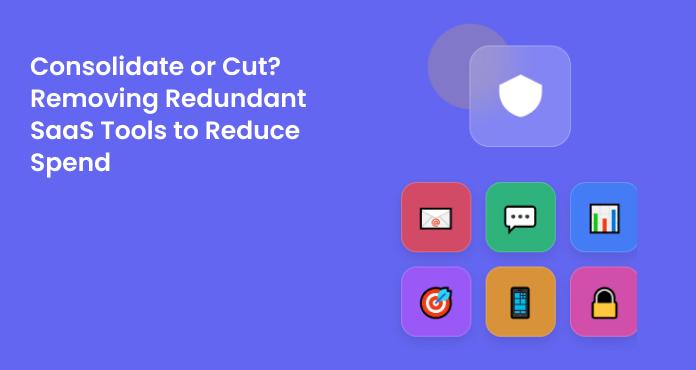
In today’s digital landscape, organizations typically use around 80 SaaS applications on average, creating a complex web of subscriptions, renewals, and overlapping functionalities. While Software as a Service solutions offer unprecedented flexibility and scalability, the proliferation of these tools can lead to significant financial waste through redundant subscriptions and underutilized licenses.
The challenge facing modern businesses isn’t just about having too many SaaS solutions—it’s about determining which applications truly add value and which ones can be consolidated or eliminated entirely. This strategic decision between consolidation and elimination requires careful analysis, stakeholder input, and a deep understanding of your organization’s actual software needs.
Understanding SaaS Redundancy and Its Impact
SaaS redundancy occurs when multiple applications serve similar functions within an organization, often arising from departmental purchasing decisions, mergers and acquisitions, or the gradual accumulation of software tools over time. This redundancy manifests in several ways: duplicate functionality across different platforms, overlapping user bases, unused licenses that continue to renew, and integration complexities that reduce overall efficiency.
The financial impact of SaaS redundancy extends beyond simple subscription costs. Organizations face hidden expenses through reduced productivity from context switching between similar tools, increased training requirements for multiple platforms, administrative overhead for managing numerous vendor relationships, and potential security risks from sprawling software ecosystems. Understanding these costs is crucial for making informed decisions about SaaS spend management.
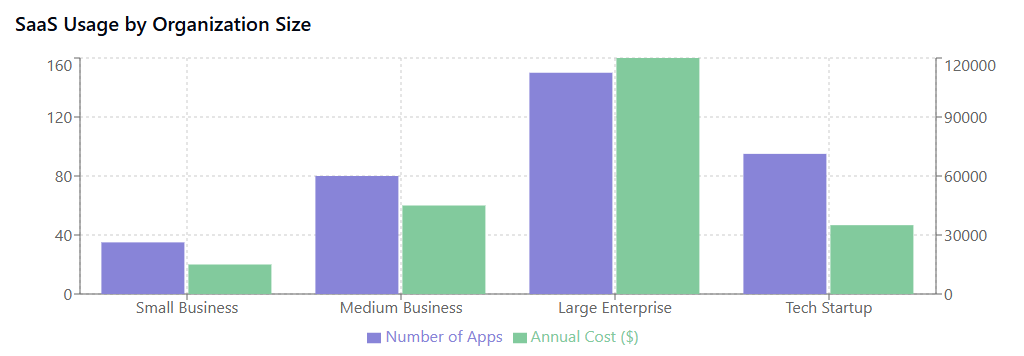
Modern businesses operating in cloud computing environments must also consider how their SaaS stack integrates with their broader technology infrastructure. The interconnected nature of cloud-based solutions means that removing one application can have cascading effects on workflows, data management, and user productivity.
The True Cost of SaaS Sprawl
When organizations fail to manage their SaaS portfolio effectively, they often discover that their actual software spending far exceeds budgeted amounts. This phenomenon, known as SaaS sprawl, typically results in 20-30% overspending on software subscriptions according to industry research. The problem compounds as businesses grow, with each department potentially subscribing to their preferred tools without central oversight.
The hidden costs of SaaS sprawl include subscription overlaps where multiple teams pay for similar functionality, abandoned subscriptions that continue charging despite lack of usage, and premium features that remain unused across various platforms. Additionally, organizations face integration costs when trying to connect disparate systems, data silos that reduce collaboration efficiency, and compliance risks from unmanaged software deployments.
For budget management for startups and established enterprises alike, understanding these costs is essential for maintaining financial health while supporting business growth. The subscription model that makes SaaS solutions attractive can quickly become a financial burden without proper oversight and strategic planning.
Assessment Framework: Identifying Redundant Tools
Before making consolidation or elimination decisions, organizations need a systematic approach to evaluate their SaaS portfolio. This assessment framework should begin with comprehensive discovery of all SaaS applications in use across the organization, including shadow IT purchases that may not appear on official software inventories.
The evaluation process should examine several key dimensions: functional overlap analysis to identify applications serving similar purposes, user adoption metrics to understand actual versus licensed usage, cost-per-user calculations to determine value efficiency, and integration complexity assessments to understand dependencies between systems. This analysis provides the foundation for informed decision-making about which tools to keep, consolidate, or eliminate.
Automated SaaS tracking tools can significantly streamline this assessment process by providing real-time visibility into software usage patterns, license utilization rates, and spending trends. These platforms help organizations move beyond manual spreadsheet tracking to data-driven decision making about their software investments.
Consolidation Strategies: When to Merge Tools
Consolidation represents an opportunity to reduce complexity while maintaining functionality. The decision to consolidate should be based on several factors: the presence of multiple tools serving substantially similar functions, user willingness to adopt a unified platform, technical feasibility of migration, and potential cost savings from reduced vendor relationships.
Successful consolidation requires careful planning to minimize disruption to business operations. This includes conducting thorough user needs analysis to ensure the consolidated platform meets diverse requirements, developing comprehensive migration plans with clear timelines and responsibilities, and providing adequate training and support to facilitate user adoption.
SaaS management platforms can facilitate consolidation by providing centralized visibility into application usage and helping identify opportunities for platform unification. These tools often include features for tracking user adoption during consolidation efforts and measuring the success of platform migrations.
Elimination Strategies: When to Cut Tools Entirely
Some SaaS applications may need to be eliminated entirely rather than consolidated. This decision typically applies to tools with extremely low usage rates, redundant functionality that’s better served by existing platforms, or applications that no longer align with business objectives. The elimination process requires careful consideration of data migration needs, user notification requirements, and potential workflow impacts.
Before eliminating any SaaS tool, organizations should conduct impact assessments to understand how removal might affect different user groups and business processes. This includes identifying any unique functionality that might be lost, assessing data export requirements, and planning alternative solutions for affected workflows.
The elimination process should also consider timing factors such as contract renewal dates, budget cycles, and business seasonality to minimize disruption and maximize cost savings. Organizations can often negotiate early termination agreements with vendors, especially when consolidating spend with preferred partners.
Financial Analysis: ROI of Consolidation vs. Elimination
The financial case for SaaS optimization requires comprehensive analysis of both hard and soft costs. Hard costs include subscription fees, implementation expenses, and migration costs, while soft costs encompass productivity impacts, training requirements, and opportunity costs from delayed decisions.
When evaluating consolidation options, organizations should calculate total cost of ownership over multiple years, including potential price increases, additional feature costs, and ongoing maintenance requirements. This analysis should also factor in negotiated volume discounts that may be available when consolidating multiple tools with a single vendor.
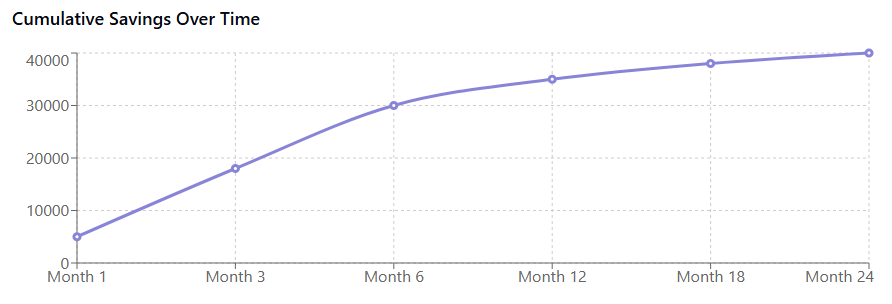
For elimination decisions, the financial analysis should include one-time termination costs, data migration expenses, and any temporary productivity losses during transition periods. However, these short-term costs are often offset by significant long-term savings from reduced subscription fees and administrative overhead.
Implementation Planning and Change Management
Successful SaaS optimization requires careful planning and change management to ensure business continuity throughout the process. Implementation planning should begin with stakeholder identification and engagement, ensuring that key users and decision-makers understand the rationale for changes and are involved in solution selection.
The planning process should establish clear phases for consolidation or elimination activities, with defined success metrics and rollback procedures if needed. This includes developing communication plans to keep users informed throughout the process, training programs to support adoption of new or consolidated platforms, and support structures to address issues during transition periods.
Change management becomes particularly important when consolidating tools that have developed strong user loyalty or eliminating applications that serve specialized functions. Organizations should invest in user training and support to ensure smooth transitions and maintain productivity levels throughout the optimization process.
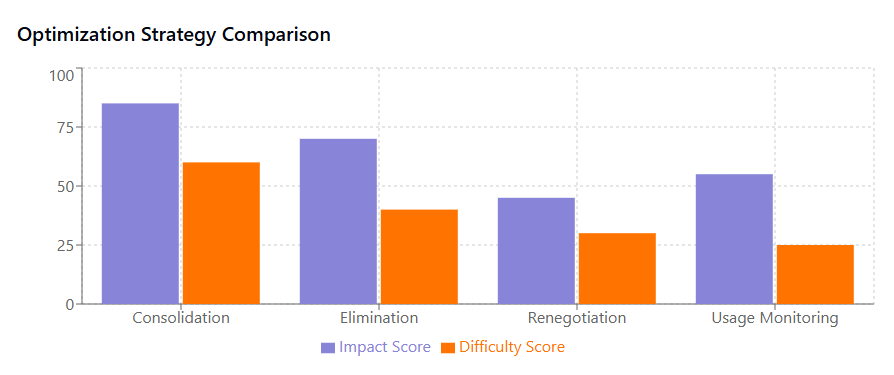
Technology Integration Considerations
Modern SaaS environments often involve complex integrations between applications, making consolidation and elimination decisions more challenging. Organizations must carefully evaluate how changes to their SaaS portfolio might affect data flows, automated processes, and user workflows that span multiple applications.
Integration considerations should include API dependencies between applications, data synchronization requirements, single sign-on configurations, and automated workflow impacts. These technical factors can significantly influence the cost and complexity of consolidation or elimination projects.
Cloud cost optimization strategies should also consider how SaaS changes might affect broader technology infrastructure costs, including data storage, bandwidth usage, and security tool requirements. The interconnected nature of modern technology stacks means that SaaS optimization decisions can have far-reaching implications.
Best Practices for Ongoing SaaS Portfolio Management
Effective SaaS portfolio management requires ongoing attention rather than periodic optimization efforts. Organizations should establish regular review processes to assess new tool requests, monitor usage patterns, and identify emerging redundancies before they become significant cost drains.
Best practices include implementing centralized procurement processes that require justification for new SaaS purchases, establishing usage monitoring and reporting systems, conducting quarterly portfolio reviews with key stakeholders, and maintaining current documentation of application functions and user bases. These practices help prevent the accumulation of redundant tools and ensure that SaaS investments continue to deliver value.
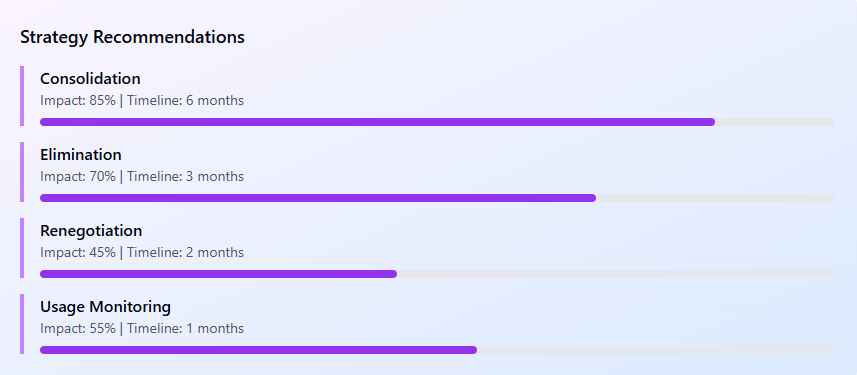
SaaS management tools can automate many of these ongoing management tasks, providing alerts for underutilized applications, tracking contract renewal dates, and generating regular reports on portfolio health and spending trends.
Measuring Success and Continuous Improvement
Organizations should establish clear metrics to measure the success of their SaaS optimization efforts. These metrics might include total subscription cost reductions, user adoption rates for consolidated platforms, time savings from simplified workflows, and improvements in data consistency and collaboration.
Success measurement should also consider qualitative factors such as user satisfaction, reduced administrative burden, and improved security posture from having fewer applications to manage. Regular user feedback collection helps ensure that optimization efforts are meeting their intended goals and identifies areas for further improvement.

Continuous improvement in SaaS management requires staying informed about new platform capabilities, emerging integration options, and changing business requirements that might affect software needs. Organizations should regularly reassess their SaaS portfolio to ensure it continues to align with business objectives and delivers optimal value.
Conclusion
The decision between consolidating and eliminating redundant SaaS tools requires careful analysis of business needs, user requirements, and financial implications. While the temptation may be to simply cut costs by eliminating applications, the most successful organizations take a strategic approach that balances cost reduction with productivity maintenance and future business needs.
Effective SaaS portfolio optimization combines comprehensive assessment, strategic planning, and ongoing management to ensure that software investments continue to deliver value over time. By implementing systematic approaches to identify and address redundancy, organizations can significantly reduce their software spending while improving operational efficiency and user satisfaction.
The key to successful SaaS optimization lies in understanding that this is not a one-time project but an ongoing capability that requires dedicated attention and the right tools to support informed decision-making. Organizations that invest in proper SaaS management processes and automated SaaS tracking capabilities will be better positioned to optimize their software spending and adapt to changing business requirements.
Whether the answer is to consolidate or cut, the most important step is to begin the assessment process and establish the governance structures needed to prevent future SaaS sprawl. With proper planning and execution, organizations can achieve significant cost savings while maintaining or even improving their operational capabilities through more efficient and strategic use of SaaS solutions.

